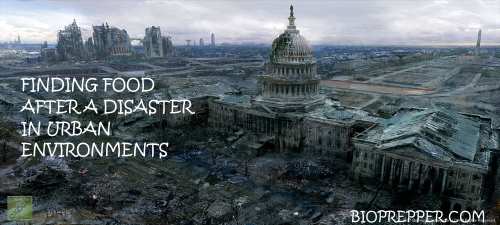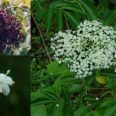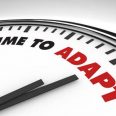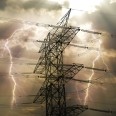| Online: | |
| Visits: | |
| Stories: |
Finding Food After a Disaster in Urban Environments
The following tips about plants and animals apply no matter where you are. Even in the most metropolitan of cites there is greenery, and likely some of the edible plants the Army Manual describes in parks, botanical gardens, roof gardens, window boxes and the like. There certainly is no lack of insects and bugs in cities, as unappealing as that sounds.
If the Sh*t has really hit the fan, and the cites are in decline and along with them the human population, more and more game will start to encroach on urban areas.
Do not be surprised if you start to see rabbits, deer and coyotes on main street, as believe it or not, there are large populations of all three living on the outskirts ofmost big cities.
If you are outside for any extended period of time, and cut off there is an abundance of plant life and vegetation that you can use for food. But there are also many plants that are not edible – you need to learn the difference.
For example, poison hemlock has killed people who mistook it for its relatives, wild carrots and wild parsnips.
The Army Survival manual suggests the following basic information for determining plants you can eat, and ones you should avoid.
- Plants growing near homes and occupied buildings or along roadsides may have been sprayed with pesticides. You should wash these plants thoroughly. In more highly developed countries with many automobiles, avoid roadside plants, if possible, due to contamination from exhaust emissions.
- Plants growing in contaminated water or in water containing Giardia lamblia and other parasites are contaminated themselves. Boil or disinfect them.
- Some plants develop extremely dangerous fungal toxins. To lessen the chance of accidental poisoning, do not eat any fruit that is starting to spoil oris showing signs of mildew or fungus.
- Avoid any weed, leaves, or seeds with an almondlike scent, a characteristic of the cyanide compounds.
- Some people are more susceptible to gastric distress (from plants) than others. If you are sensitive in this way, avoid unknown wild plants. If you are extremely sensitive to poison ivy, avoid products from this family, including any parts from sumacs, mangoes, and cashews.
- Some edible wild plants, such as acorns and water lily rhizomes, are
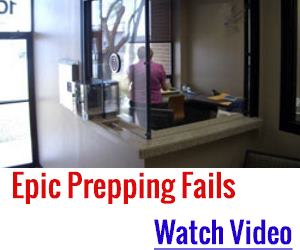 bitter. These bitter substances, usually tannin compounds, make them unpalatable. Though they taste bad, they are edible — boiling them in several changes of water will usually remove these bitter properties.
bitter. These bitter substances, usually tannin compounds, make them unpalatable. Though they taste bad, they are edible — boiling them in several changes of water will usually remove these bitter properties. - Many valuable wild plants have high concentrations of oxalate compounds, also known as oxalic acid. Oxalates produce a sharp burning sensation in yourmouth and throat and damage the kidneys.
- Baking, roasting, or drying usually destroys these oxalate crystals. The bulb of the jack-in-the-pulpit is known as the “Indian turnip” is a good example, you can eat it, but only after removing these crystals by slow baking or by drying.
WARNING: Though it may be tempting because they are recognizable, you should avoid eating mushrooms, or any fungus in a survival situation!
The only way to tell if a mushroom is edible is by positive identification.
There is no room for experimentation. Symptoms caused by the most dangerous and toxic mushrooms may not show up until several days after you have eaten them. By that time, it is too late to reverse their effects.
To avoid other potentially poisonous plants, stay away from any wild or unknown plants that have:
- Milky or discolored sap.
- Beans, bulbs, or seeds inside pods.
- Bitter or soapy taste.
- Spines, fine hairs, or thorns.
- Foliage that resembles dill, carrot, parsnip, or parsley.
- An almond scent in woody parts and leaves.
- Grain heads with pink, purplish, or black spurs.
- A three-leafed growth pattern.
Identifying edible plants is a complex science. Some plants have both edible andpoisonous parts. Many are edible only at certain times of the year. Others may have poisonous relatives that look very similar to the varieties you can eat or use for medicine.
If you are truly interested in learning all there is to know about identifying what plants you can eat by living off the land, you may want to take a specific course in the subject.
One plant that is almost always safe to eat is seaweed. Seaweed is a valuable source of iodine, other minerals, and vitamin C.
When gathering seaweed for food, find living plants attached to rocks or floating free. Seaweed washed onshore for any length of time may be spoiled or decayed. You can dry freshly harvested seaweed for later use.
Different types of seaweed should be prepared in different ways. You can dry thin and tender varieties in the sun or over a fire until crisp. Crush and add these to soups or broths. Boil thick, leathery seaweeds for a short time to soften them. Eat them as a vegetable or with other foods.
Other useful resources:
Survival MD (Best Post SHTF Medical Survival Guide Ever)
Blackout USA (EMP survival and preparedness guide).jpg)
Backyard Innovator (All Year Round Source Of Fresh Meat,Vegetables And Clean Drinking Water)
Conquering the coming collapse (Financial advice and preparedness )
Liberty Generator (Easy DIY to build your own off-grid free energy device)
Backyard Liberty (Easy and cheap DIY Aquaponic system to grow your organic and living food bank)
Bullet Proof Home (A Prepper’s Guide in Safeguarding a Home )
Family Self Defense (Best Self Defense Strategies For You And Your Family)
Sold Out After Crisis (Best 37 Items To Hoard For A Long Term Crisis)
You may also like …





